

Hofkirche
Court Church
Innsbruck, Austria
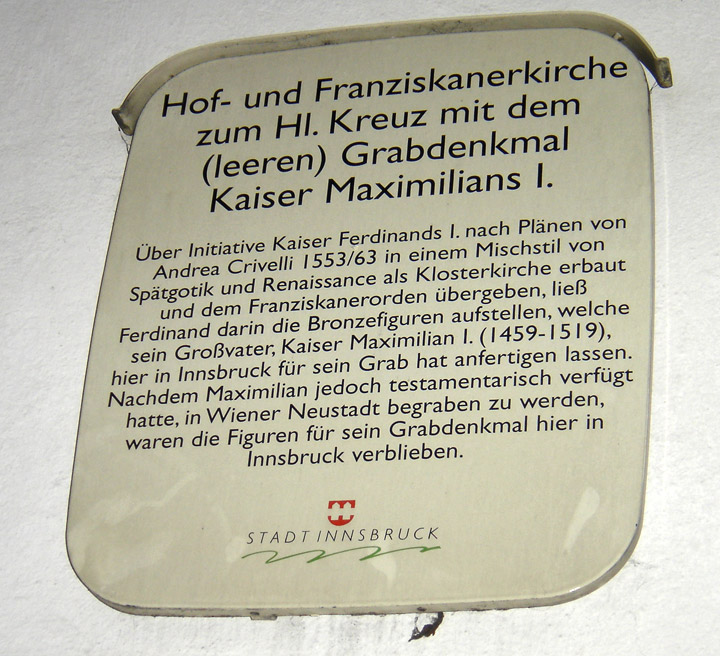
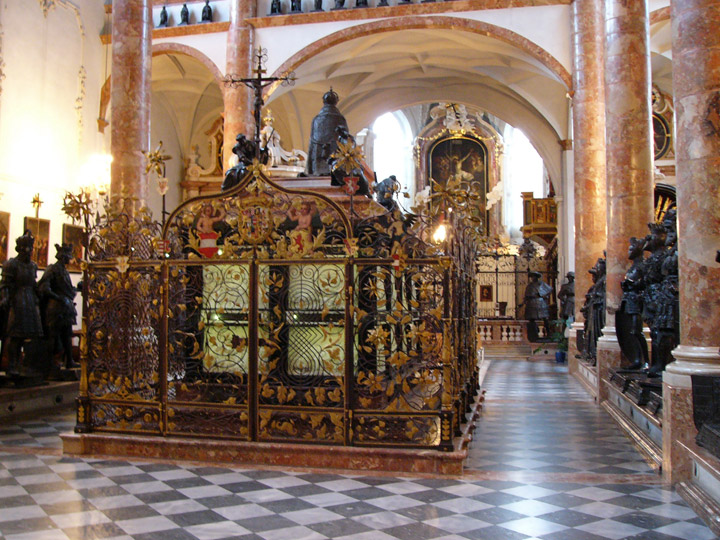
Emperor Maximilian I memorial
The Hofkirche (Court Church) in Innsbruck with its memorial for Emperor Maximilian I is the most prominent tomb memorial for an emperor in Europe. Furthermore it provides evidence of European court art for which the best artists such as Albrecht Dürer, Peter Vischer the older and Alexander Colin were employed.
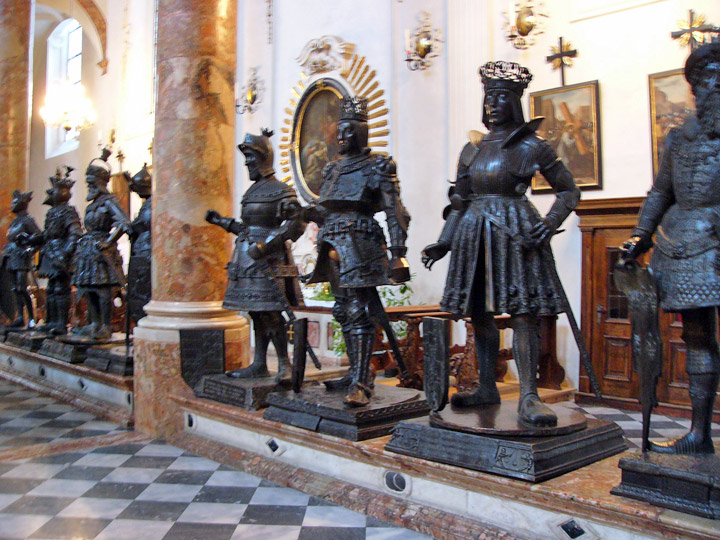
Art developed at the court by the Hapsburgs in Innsbruck is connected to both
international and local traditions. At the time of Emperor Maximilian I (1459 -
1519) Innsbruck had a central standing in Europe.
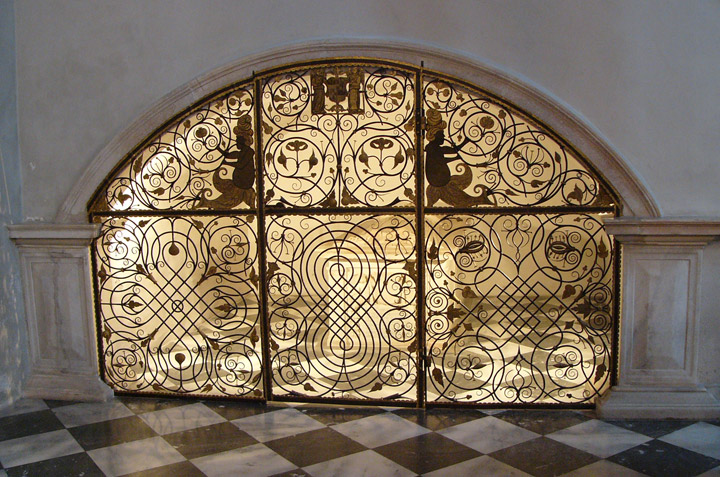
After the idea to place Maximilian's tomb in the castle chapel in Wiener
Neustadt, as Maximilian had proposed in his testament, proved to be
impracticable, King Ferdinand I and the executor of the will planed the
construction of a new convent with church and monastery in Innsbruck for the
memorial.
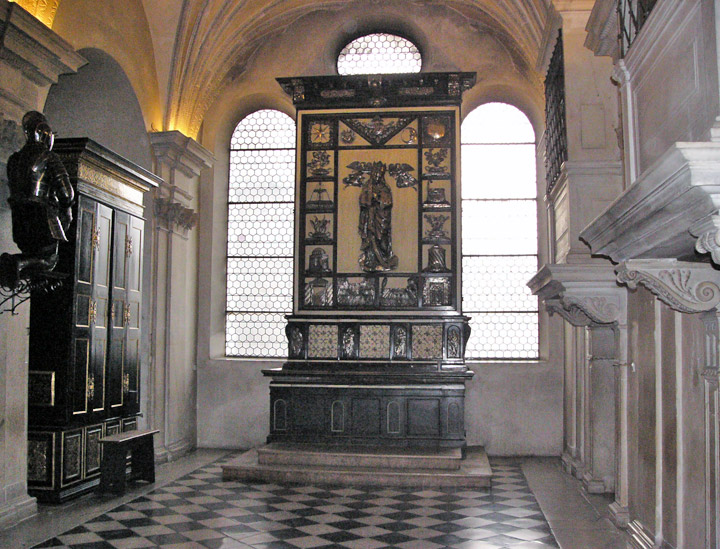
The church consists of three naves with a setback three-sided choir, round and
pointed arch windows, and a steep crippled hip roof. It was constructed between
1553 and 1563 based on the blueprints by the architect Andrea Crivelli from
Trento. Head of construction was Nikolaus Türing from Memmingen, whose
grandfather built the Golden Roof. After his death in 1558 the stonemason master
Marx della Bolla took over the responsibility for the construction.
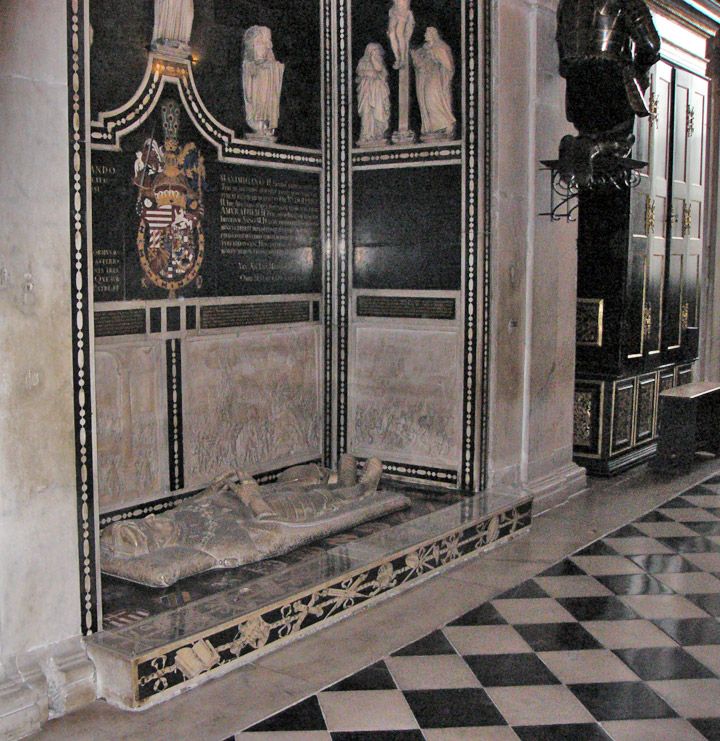
The exterior is sectionalized by layered buttresses and distinctly shows the
transitional style between the German late Gothic style and the Renaissance. The
stonemasons Hieronymus de Longhi and Anton de Bol crafted the splendid
Renaissance portal.

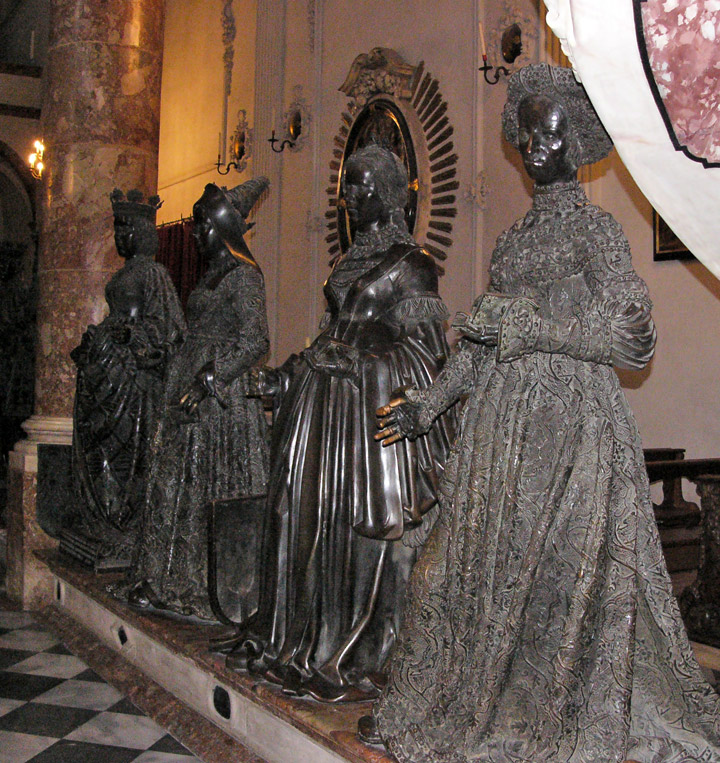
Galleries, high round pillars made from red marble with white stylized
Corinthian capitals as well as a lectern sectionalize the interior. The original
ribs made from sandstone from Mittenwald have been preserved in the galleries.
Johann Martin Gumpp reconstructed the main vault that was damaged after an
earthquake in the 17th century in the baroque style.

looking toward the high altar
A picture of the crucifixion by J.C. Auerbach decorates the high altar, which is based on a sketch by the Viennese court architect Nicolaus Pacassi, and Balthsar Moll produced the metal statues on each side.
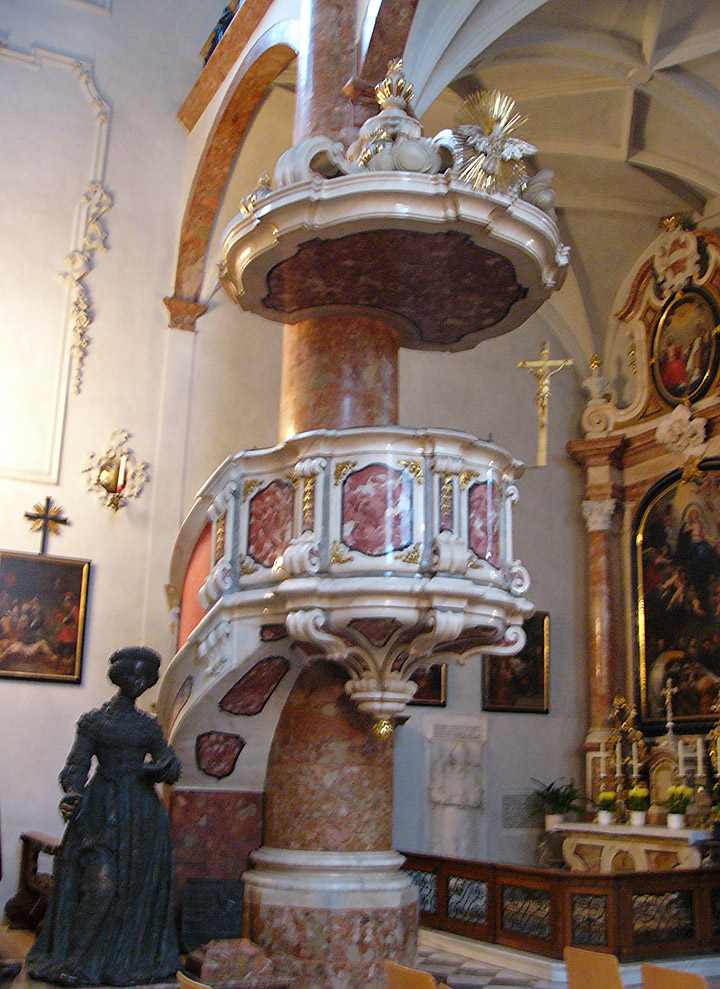
the pulpit

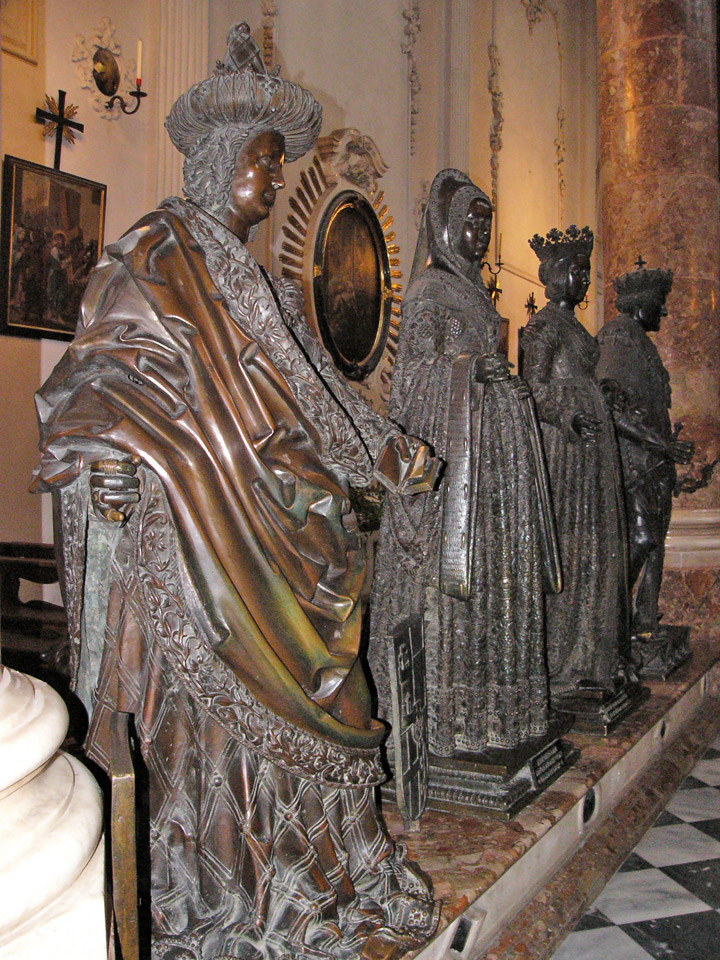
Three works of art that emphasize the beauty and importance of the Hofkirche
should be mentioned, namely the left altarpiece by Michael Waldmann the younger,
the Baroque crossroad station pieces by Johann Michael Hudetz and the "Fürstenchor"
(Princes' Chancel) with magnificent intarsia by Hans Waldner from Ravensburg and
Konrad Gottlieb from Innsbruck.

the organ
The Renaissance organ on the right hand side of the choir wall by Jörg Ebert from Ravensburg counts as one of the five most famous organs in the world and is in addition the largest nearly undamaged organ from the Renaissance in Austria. Domenico Pozzo from Milan painted the organ panels.
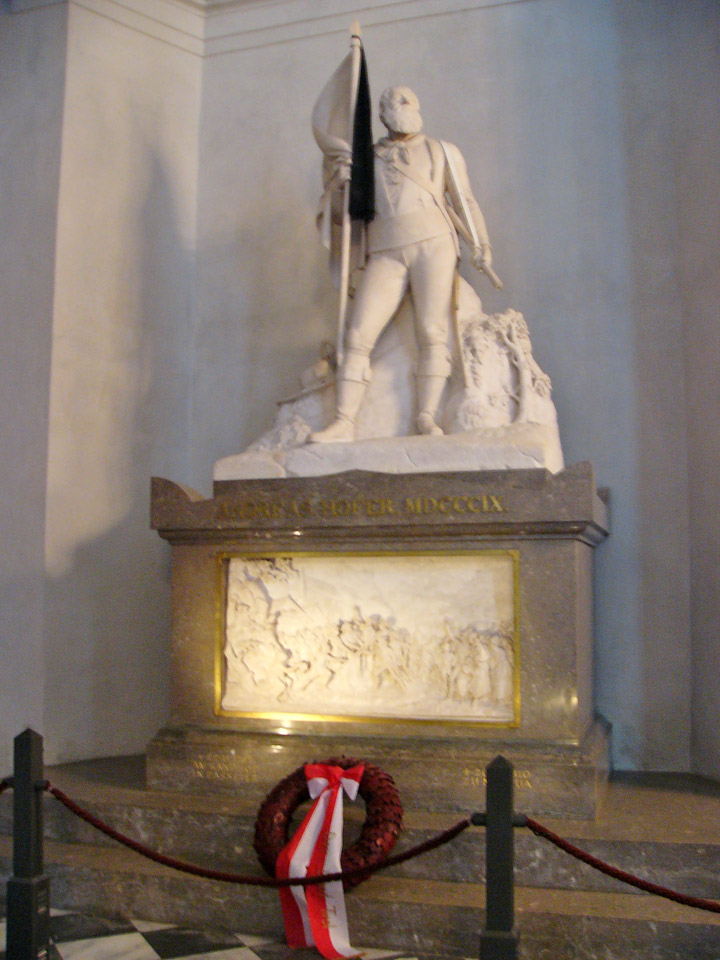
Andreas Hofer
In the northern bay stands the tomb of the Tyrolean freedom fighter Andreas Hofer who was shot dead in Mantua in 1810.

Situated in a low recess under the stairwell that leads from the Hofkirche
(Court Church) to the Silver Chapel, the grave of Katharina of Loxan, the aunt
and lady-in-waiting to Philippine Welser can be found.
Text from www.hofkirche.at
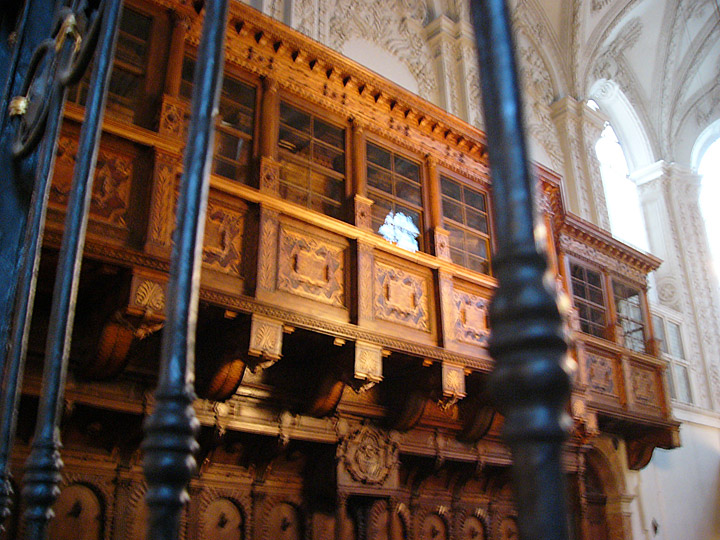
the box where Maria Therese would sit for services